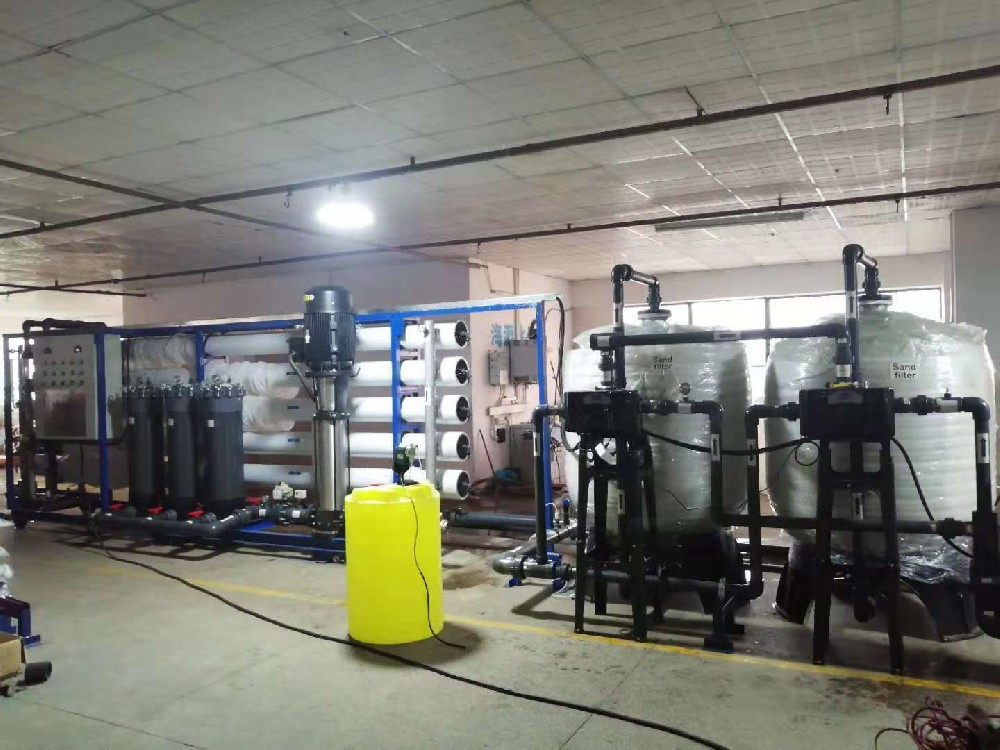
Wechat/Whatsapp:
+8613798883773

Wechat/Whatsapp:
+8613798883773
HYWATER Reverse Osmosis plant/system


Why add inhibitor dosing for Reverse osmosis system Before talking about the role of reverse osmosis inhibitor dosing, reverse osmosis system passes raw water through precision filters, granular activated carbon filters, compressed activated carbon filters, etc., and then passes through The pump is pressurized, and the reverse osmosis membrane (RO membrane) with a pore size of 1/10000um (equivalent to 1/6000 of the size of E. coli and 1/300 of the virus) is used to change the higher concentration water into low concentration water, and at the same time Industrial pollutants, heavy metals, bacteria, viruses and other impurities mixed into the water are all isolated, so that the water treatment equipment can meet the physical and chemical indicators and hygienic standards stipulated for drinking, and produce clear to pure water, which is the best way for the human body to replenish high-quality water in a timely manner. The best choice. Because the water purity produced by Reverse osmosis system is the highest among all water production technologies currently mastered by human beings, the cleanliness is almost 100%. The reverse osmosis membrane is the key equipment of the reverse osmosis system. When the system runs continuously for a long time, the calcium and magnesium ions in the water will continue to precipitate and adhere to the surface of the reverse osmosis membrane, forming scaling and blocking the membrane pores, which will affect the water effluent efficiency of the reverse osmosis system. Damage the reverse osmosis membrane. Since the reverse osmosis membrane is relatively costy, during the operation of the reverse osmosis system, the inhibitor dosing should be added to delay the precipitation of calcium and magnesium ions and the scaling of the membrane surface. 1) Effective control of inorganic fouling in a large concentration range 2) Do not aggregate with iron, aluminum oxides and silicon compounds to form insoluble matter 3) It can effectively inhibit the polymerization and deposition of silicon, and the concentration of SiO2 on the concentrated water side can reach 290 ppm 4) It can be used for reverse osmosis CA and TFC membranes, nanofiltration membranes and ultrafiltration membranes 5) Excellent solubility and stability 6) The pH value of the feed water is valid within the range of 5-10 Functions of inhibitor dosing 1) Complexation and solubilization: The reverse osmosis scale inhibitor dissolves in water and is ionized to form a negatively charged molecular chain, which forms a water-soluble complex or chelate with Ca2, thereby increasing the solubility of inorganic salts , play a role in scale inhibition. 2) Lattice distortion: Some functional groups in the reverse osmosis scale inhibitor molecule occupy a certain position on the crystal nucleus or crystallite of the inorganic salt, which hinders and destroys the normal growth of the inorganic salt crystal and slows down the growth rate of the crystal. , thereby reducing the formation of salt scale; 3) Electrostatic repulsion: The reverse osmosis scale inhibitor dissolves in water and adsorbs on the crystallites of inorganic salts, which increases the repulsion between the particles, hinders their agglomeration, and keeps them in a good dispersion state, thereby preventing or reducing the scale of the particles. form. 4) Functional types and applications of reverse osmosis antiscalants Reverse osmosis antiscalants are used to improve the performance of reverse osmosis and nanofiltration systems 5) Antiscalants and dispersants are a series of chemicals used to prevent the precipitation and scale formation of crystalline mineral salts. More inquiries related to Reverse osmosis system please contact: Mob& Wechat& WhatsApp: (+86)13544774483 Email: sales010@water-sy.com We will provide high-quality, all-round comprehensive professional services for project consulting, system design, manufacturing, installation and commissioning, personnel training, etc
